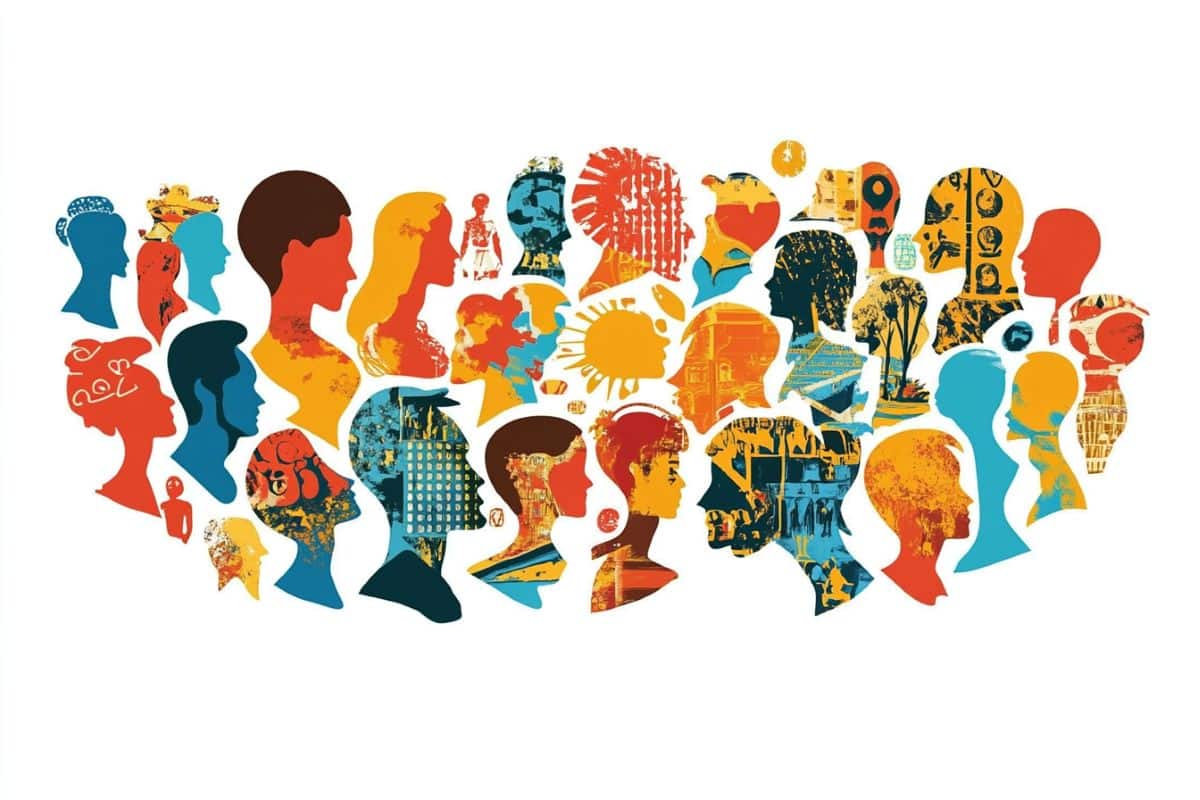Summary: A new study explores how cultural practices influence the transmission of native languages, showing that societal norms like matrilineal or patrilineal inheritance can affect linguistic and genetic evolution. The researchers found stronger links between maternal genetic inheritance and linguistic sounds in some matrilineal societies, particularly in Africa, but no consistent global pattern emerged.
Using data from 130 populations, they analyzed how genes and languages evolve together as people migrate and how cultural norms shape these patterns. The findings highlight the complex relationship between culture, genetics, and language, underscoring the importance of considering cultural factors in genetic and linguistic research.
This study contributes to understanding human evolution beyond just genetics by integrating cultural and ethnographic perspectives. It marks a milestone in the ongoing exploration of cultural evolution.
Key Facts:
- Matrilineal societies in Africa show stronger links between maternal genetics and linguistic sounds.
- No global pattern connects genetics and language, emphasizing cultural diversity’s role.
- The study uses genetic, linguistic, and ethnographic data from 130 populations worldwide.
Source: Vanderbilt University
A person’s native language is often referred to as their “mother tongue.” But does a first language always come from your mother?
In a new study conducted by Associate Professor of Biological Sciences Nicole Creanza, postdoctoral student Yakov Pichkar and Alexandra Surowiec, they found that certain cultural factors, such as being born in a matrilineal or patrilineal society and where a child grows up after parents separate from their respective households, may affect linguistic and genetic evolution.
If children learn their language primarily from their mother, language transmission might follow the evolutionary patterns of their maternally inherited genes (such as X chromosomes and mitochondria) more closely than their genomes as a whole.
When children grow up surrounded by the language of their mother’s extended family, the researchers hypothesized that these maternal gene-language associations might be even stronger.
These matrilineal influences on the sounds in languages, which the researchers detected by comparing the associations between genes, languages, and geography, were particularly strong in areas in Africa.
However, there was no consistent global pattern. The association between maternal genetics and linguistic sounds had not previously been tested worldwide.
“Overall, we found that this phenomenon seems to occur in some geographic regions but not others, indicating that cultural practices can affect how languages and genes are transmitted, but that it is difficult to make global predictions about these cultural practices,” Creanza said.
“In particular, matrilineal populations in Africa appear to have a closer association between language and mitochondrial genetic variation than expected.”
To conduct the study, which has been published in the Proceedings of the National Academy of Sciences, the research team used genetic, linguistic, and ethnographic data from 130 populations around the world to explore whether language is preferentially transmitted in parallel with maternally or paternally inherited genes.
“As people move around the globe, they take their genes and languages with them, and both the genes and the languages slowly change,” Creanza said.
“Thus, when two populations are further apart, they tend to be more genetically different and have more different sounds in their languages.
“However, males and females do not always follow the same movement patterns—for example, in some populations, wives might move to live near their husband’s family, and in others, husbands might move near their wife’s family.”
Creanza said this study built upon her previous work, which showed that the sounds in languages followed similar geographic patterns as genes did.
“I hope that it inspires future genetic researchers to more closely consider the cultural, ethnographic, and linguistic features of the populations they study,” she said.
“Genes do not tell the full story of human evolution, and incorporating these cultural considerations is crucial for understanding humans and their history.”
The paper appears in a special edition of PNAS that highlights 50 years of the quantitative study of cultural evolution, or how learned behaviors change over time, such as human cultural practices and languages.
Creanza co-edited the special edition, which features a collection of articles on the field of cultural evolution. The edition highlights the progress and challenges in the field and lays out a vision for the next 50 years of research.
About this genetics and language research news
Author: Mary-Lou Watkinson
Source: Vanderbilt University
Contact: Mary-Lou Watkinson – Vanderbilt University
Image: The image is credited to Neuroscience News
Original Research: Open access.
“Genetic and linguistic comparisons reveal complex sex-biased transmission of language features” by Nicole Creanza et al. PNAS
Abstract
Genetic and linguistic comparisons reveal complex sex-biased transmission of language features
The history of people’s movements and interactions shapes both genetic and linguistic variation.
Genes and languages are transmitted separately and their distributions reflect different aspects of human history, but some demographic processes can cause them to be similarly distributed. In particular, forms of societal organization, including movements in and out of a community, may have shaped the transmission of both genes and languages.
If children were more likely to learn their mother’s language than their father’s when their parents were from populations that spoke different languages or dialects, then language variation might show a closer association with maternally transmitted genetic markers than autosomal ones; this association could be further reinforced if children reside with predominantly maternal kin.
We analyze the worldwide relationship between linguistic and genomic variation, leveraging the sex-biased transmission of X chromosomes to assess whether language has tended to be preferentially transmitted along the male or female line.
In addition, we measure the effects of postmarital residence with female kin, matrilineal descent, and endogamy on the covariation of mitochondrial DNA and languages, using mtDNA because genomic data were available for very few populations with these ethnographic traits.
We find that while there is little evidence for a consistent or widespread sex bias in the transmission of language, such biased transmission may have occurred locally in several parts of the world and might have been influenced by population-level ethnographic characteristics, such as female-based descent or residence patterns.
Our results highlight the complex relationships between genes, language, ethnography, and geography.








